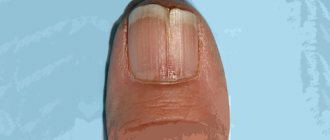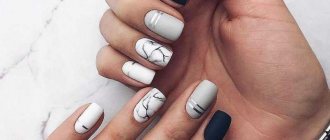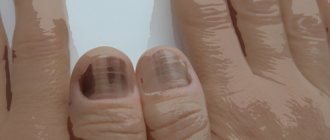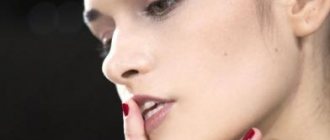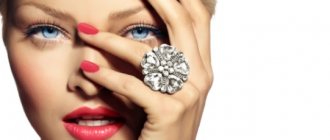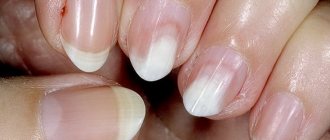Home page » Beauty » Nails
Author of the article
Svetlana Pavlikhina
Reading time: 7 minutes
AA
When your fingernails curl, it is not only unsightly, but also causes great discomfort. There can be many reasons for this condition. It is important to promptly find provoking factors and try to eliminate the problem. A healthy nail plate should be smooth and even, without ridges, chips, white spots, or cracks.
Features of the direction of bending the nail
Deformation can be in the form of:
- shape changes;
- bulges and depressions;
- bend in one direction;
- reducing the elasticity and structure of the plate;
- damage to the cuticle with the nail.
By the nature of the change, you can understand the reason that caused the development of the problem.
Bend your nails up
Nail plates usually bend upward when:
- unbalanced diet;
- lack of vitamins and minerals;
- plate injuries;
- lack of moisture;
- active use of aggressive detergents;
- damage by viruses and fungi.
Bend down
The twisting of the plate on the fingers downwards is often associated with hereditary characteristics. Artificial extension can help in this case.
In addition, the downward bend is associated with:

- finger injury;
- errors during extension.
- abuse of low-quality hand and nail care products, especially if they dry out the plates;
- exacerbation of chronic pathologies;
- lack of vitamins;
- diseases of the nail plate.
To prevent curling, do not wait until your nails grow too large. You need to systematically trim them carefully and select only high-quality and natural products for the care of nails, cuticles and hand skin.
Changes around the edges
Usually thin, soft and weak structures that lack nutrition are bent at the edges. The problem may also be associated with the slow growth of the plate, when it is exposed to the aggressive influence of provoking factors for a very long time.

Such a nail can bend from the side even with a slight impact on its surface.
Bend inward
Curvature of the plate with chaotic deformation is characteristic of a fungal infection. When the plate grows, it begins to twist inward and cut into soft tissue.
The problem can only be solved with the right treatment.
Deformation of long nail structures
Deformation of long nails is associated with a lack of fluid and vitamins. In this case, the tips can become thinner, break, become covered with small cracks, or peel off.
To normalize the condition, it is enough to review your diet, care products, and stabilize your water balance.
To restore nutrients, you can use massage, baths, compresses, and moisturizer.
Features of bending on different fingers
Due to heredity, the pathology most often appears on the index finger. This is due to the greatest workload of the phalanges when performing any actions.
The tip can also curl on a sore finger. If the deformity is caused by injury, then the bend is often diagnosed on any finger, depending on the affected area.
Deformation of nails after childbirth
During pregnancy, hormonal changes occur in the body, and the metabolic process changes. A lack of vitamins appears immediately on nails, hair, teeth, and skin.
Usually after childbirth the condition stabilizes completely or partially.
To speed up and alleviate a woman’s condition, it is necessary to eat properly, drink vitamins, use nourishing hand creams and oils
What to do if the nail plates curl on your feet or hands?
First of all, don’t panic, because you are not the first person to encounter this problem.
Today there are many ways to overcome this disease. Don't hide the problem under polish or hide it in closed shoes.
Treatment of plates curling on the sides at the doctor

After all, if the nails begin to curl, then perhaps the body lacks some nutrients. In this case, the doctor will prescribe you to undergo certain examinations that will indicate the cause of the problem.
The doctor will also decide what to do with the nail that has grown into the skin. Will it be necessary to get rid of it or is it still subject to treatment?
Folk remedies
Nail deformation requires professional intervention, but folk methods can also have a positive effect. If you still decide not to turn to specialists, then try to fight curled nails yourself using folk remedies. Here are several ways to help cure nails from this disease:
- Take salt baths for your hands and feet . For such baths, ordinary table salt is perfect; the main thing is to correctly calculate the proportion. You can add a few drops of iodine to the salt bath. This procedure will soften the nail plate and the cuticle around it. In the future, you can easily trim your nails. Such baths are excellent for removing inflammation.
- Aloe works great for curled nails . To do this, you need to take one aloe leaf and crush it into a paste. Then add about 30 drops of boiled water to this consistency and mix everything until smooth.
Lubricate your finger with this mixture and bandage it, but not tightly, so that the blood supply is free. For a thermal effect, it is recommended to wrap the top with cling film. You need to spend the night with such a compress, and in the morning remove it and rinse with warm water.
- If inflammation has started from curled nails, then a furatsilin tablet will help you a lot . Dissolve one furatsilin tablet in one liter of warm water and make baths as in the first point.
- Birch mushroom will be a faithful assistant for deformed nails . For treatment, a freshly cut mushroom should be applied to the nail with a cut and wrapped with a bandage overnight. This compress will soften the nail and reduce pain.
- Vishnevsky ointment also softens nails well . Just lubricate your nails at night.
- And this list is completed with products that are always available - onions and honey . To do this, first make soda baths for your hands or feet. Then chopped onion mixed with honey is applied to the nail and wrapped in cling film. It may also be helpful to wear a sock to add extra warmth. In the morning, remove the compress and rinse with water.
- Baths in infused oak bark (a teaspoon per glass of boiling water).
- Applying castor oil to the nail.
- A “cocktail” of celandine juice with medical alcohol should help against fungal infections . But they apply it after steaming.
- Fresh lemon will also come in handy . Dip your nails into it for a few minutes.
Read also: Thickening of toenails: causes and treatment with traditional and folk remedies
To date, there is no consensus on which method is appropriate for treating curled nails. It all depends on the severity of the disease.
Causes of curling nails
Changing the shape of the tips of the nails and twisting the plate occurs when they are exposed to external or internal factors.
External ones include:
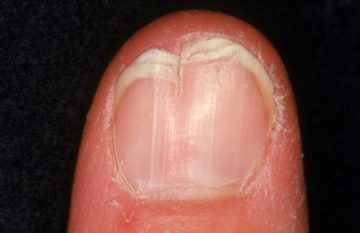
- Incorrect care.
- Injury to the plate.
- Damage by fungi, bacteria.
Internal reasons include:
- Avitaminosis.
- Dehydration.
- The presence of chronic pathologies.
- Congenital features of plates.
- Weakening of the immune system.
- Metabolic disease.
In half of the cases, bending of nails occurs due to the penetration of a fungal infection.
Infections
Nails under the influence of pathogenic microorganisms can not only bend, but also change shape and color. In this case, it is not necessary that the fungus or infections strike the plates; the main thing is their development in the body.

Viruses are no less dangerous. They rapidly weaken the immune system, which immediately affects the structure of the plate.
To get rid of the problem, you need an integrated approach, since local treatment only temporarily reduces the symptoms of the disease.
Avitaminosis
If there is a metabolic disorder or an unbalanced diet, there is a lack of vitamins, which causes fragility, fragility, thinning, and splitting of nails.
The reason for the lack of vitamins may be internal pathologies that interfere with the absorption of nutrients. Severe diseases include anorexia, anemia, dystrophy, and dysbacteriosis.
To normalize the condition, it is necessary to treat existing ailments and periodically take a complex of vitamins A, B, C, D, microelements such as calcium, magnesium, iron, zinc and selenium are also important.
Diseases of the nail plates
Sometimes the question arises as to why problems with nails occur with proper nutrition and care. This may be associated with the development of some pathology.
The most common diseases include:
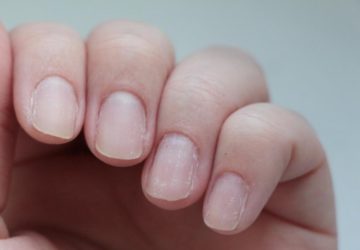
- Hippocratic nails.
- Koilonychia.
- Onychogryphosis.
- Platonychia.
- Micronychia.
- Ingrown nail.
Injuries
The nail may begin to curl after injury. With a strong impact, compression of the nail root or lunula, the plate is deformed, its proper growth and development is disrupted.
A modification of the structure triggers pathological processes, and in the future the nail can no longer grow normally, the problem remains forever. But with ordinary minor household injuries, the situation can be saved by cutting the plate at the point of thinning, taking vitamin complexes, medicinal lotions and baths.
Improper care
Improper care includes:
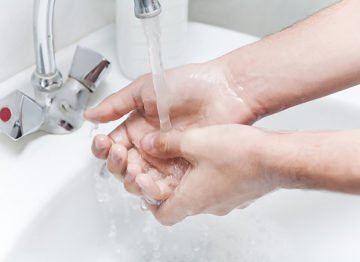
- Lack of hygiene.
- Frequent extensions.
- Working with household chemicals without gloves.
- Failure to comply with nail cutting rules.
Household chemicals and build-up quickly wear out the plates, making them thin and brittle. To prevent your nails from curling, you should take special medicinal baths and drink vitamin complexes.
Heredity
If the disease is inherited from ancestors, then it manifests itself in the bending of the plates when reaching a certain length. Even with sufficient thickness, the nail grows and curls into a tube . The thumbs and index fingers, and sometimes also the middle fingers, suffer from deviations at the gene level.
It is useless to treat such a pathology. Patients are advised to have nails of a certain length or have them extended.
Other reasons
Sometimes deformation of the nail plate can be associated with hormonal changes, stress, and decreased immunity.

Problems are also observed with various diseases of internal organs.
Pathologies of the liver, gastrointestinal tract and pancreas cause disruption of metabolic processes and absorption of vitamins, and diabetes mellitus provokes the accumulation of sugar in the phalanges of the hands, which causes deformation and tissue necrosis.
Possible diseases
Diseases of the respiratory tract often cause the nails to bend downwards. In addition to changing shape, the plate may change color to yellowish or bluish. A similar symptom is often observed in people with the following diseases:
- Chronical bronchitis.
- Asthma.
- Lungs' cancer.
- Tuberculosis.
- Chronic obstructive pulmonary disease.
Various pathologies of the thyroid gland, as well as disturbances in the functioning of the pancreas and liver, can affect the fact that the nail plate begins to curl downwards. In addition, rounding of the nails may be the first symptom of a fungal infection.
Treatment
Sometimes you can straighten your nails by reviewing your lifestyle, normalizing your diet, sleep and rest patterns, and refusing extensions.
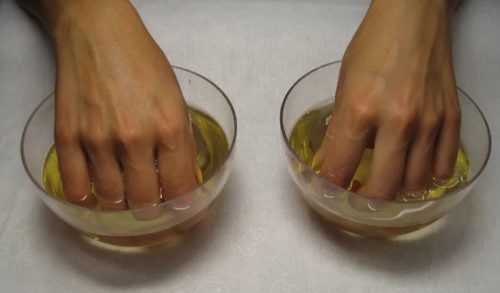
If the reasons lie in internal pathologies or infectious lesions, then you should resort to drug treatment, choose a diet and take vitamins in courses.
Various baths, massages, paraffin therapy, and hardware correction are also useful. In severe cases, leveling is carried out with special plates and staples. Removal of the nail is necessary if the structure is completely damaged by the fungus.
Medications
Medicines are selected individually, taking into account the cause of the pathology.
May be assigned:
- Antifungal agents. They destroy pathogenic flora and restore the integrity of the plate. Ketoconazole, Clotrimazole, Mycozan, Fluconazole are popular.
- Antibiotics. Indicated when a bacterial infection occurs. Often used: Clindamycin, Levomycetin, Erythromycin.
- Vitamin complexes: Vivasan, Merz.
ethnoscience
Strengthening your nails can also be done at home.
For this use:
- Lemon masks. Nails are immersed in lemon pulp for 5-10 minutes.
- Vitamin baths. Add 2 drops of iodine and vitamin A into the prepared container with water. Keep the plates in the solution for about 15 minutes. After the procedure, your fingers should be dry for several hours so as not to wash off the nutritional layer.
- Oil baths. Add a few drops of grape seed essential oil and 5-10 ml of olive oil to green tea. The procedure is done within 10 minutes.
- Baths with sea salt. You can keep your hands in the solution for up to 20 minutes.
Prevention measures
To minimize the risk of developing a bend in the nail plate, the following rules must be followed:
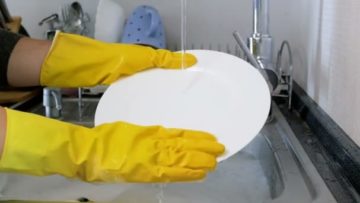
- Use protective equipment when working with aggressive chemicals.
- Refuse to have nail extensions done or have them done only by a qualified professional.
- Normalize your diet by enriching your diet with greens and healthy foods.
- Learn how to cut your nails correctly.
- Promptly treat all inflammatory processes of the stratum corneum and chronic pathologies.
Bruises and improper care
Mechanical injuries often cause the nail plate to become bent. This can be caused by inept actions of a manicurist, the use of a very rough metal file, as well as frequent extensions performed in violation of the technique.

The reason that your toenails curl downward may be due to tight shoes. In the event that incorrect actions by the pedicurist can be excluded, it is recommended to pay attention to those shoes in the wardrobe that have a narrow toe. It is better to avoid them completely or wear them only in exceptional cases.

